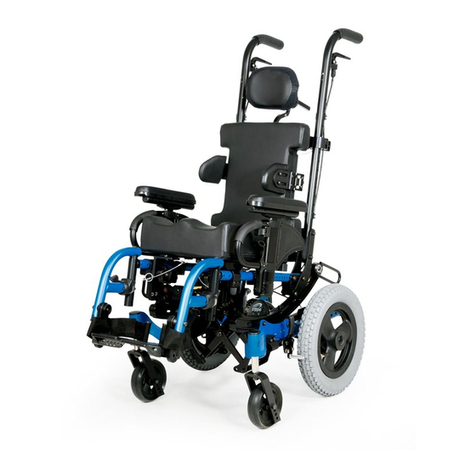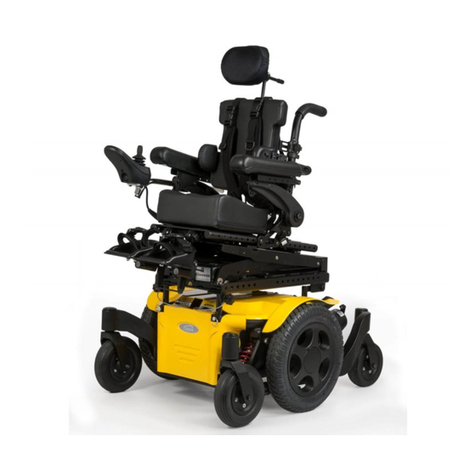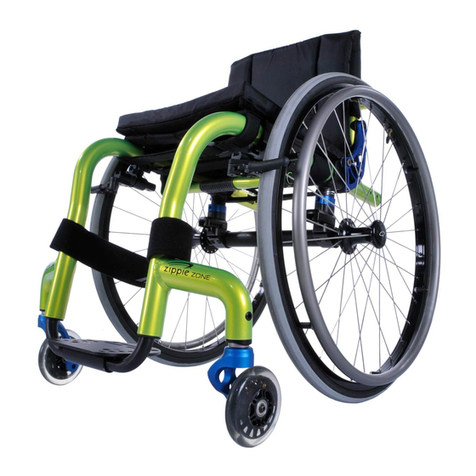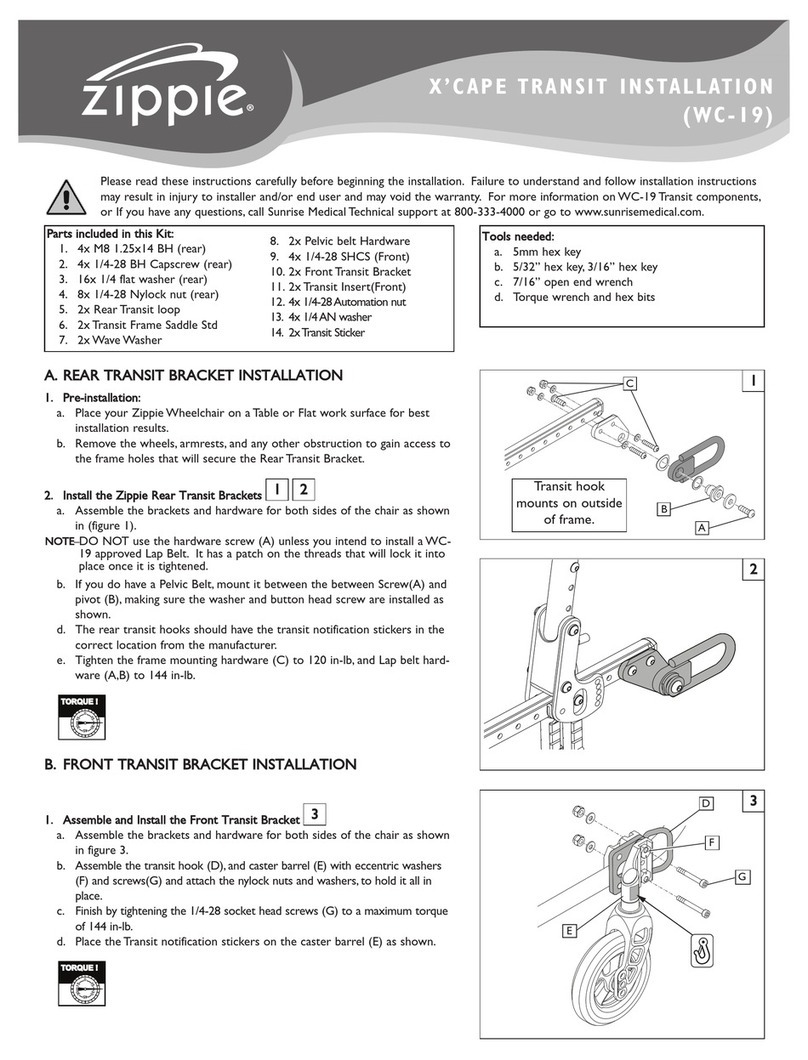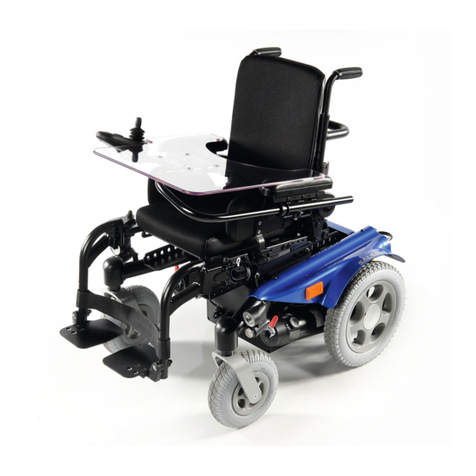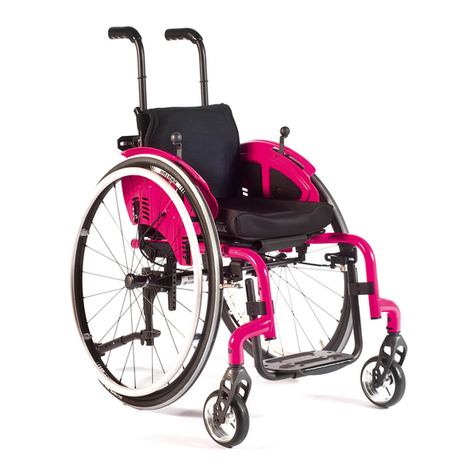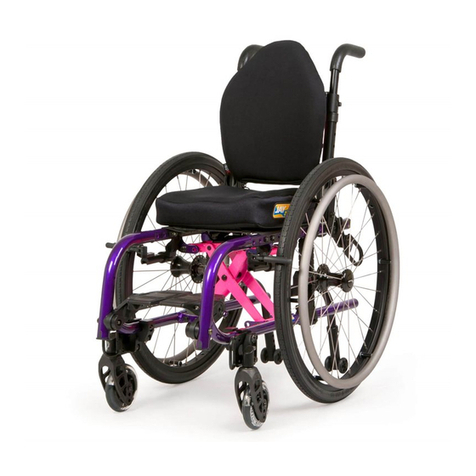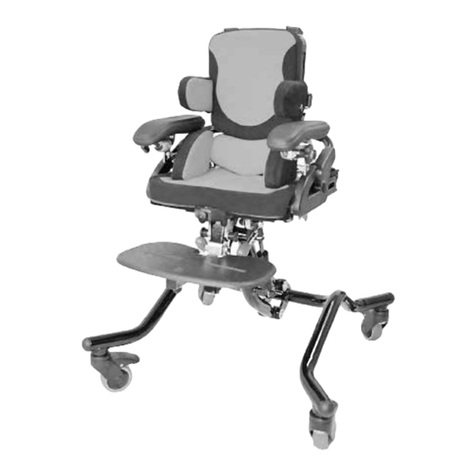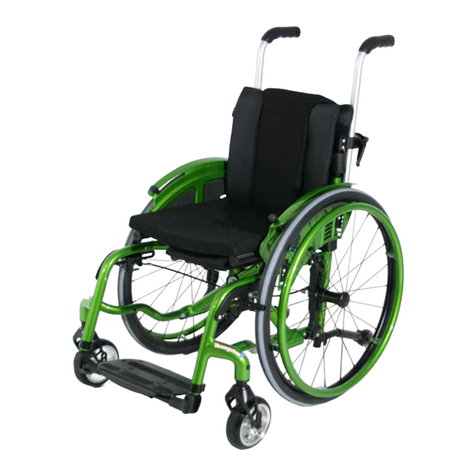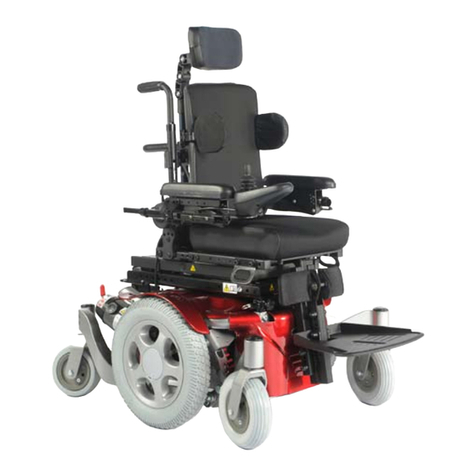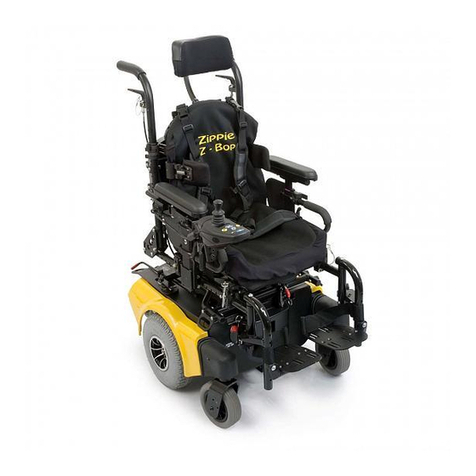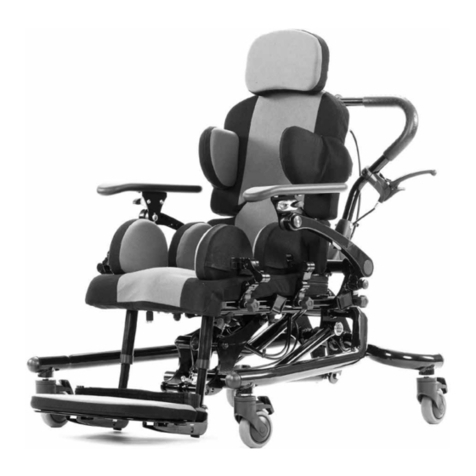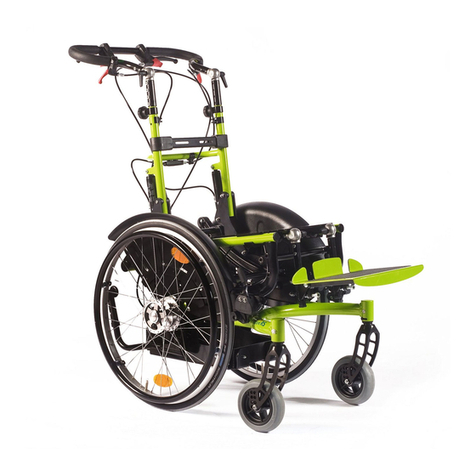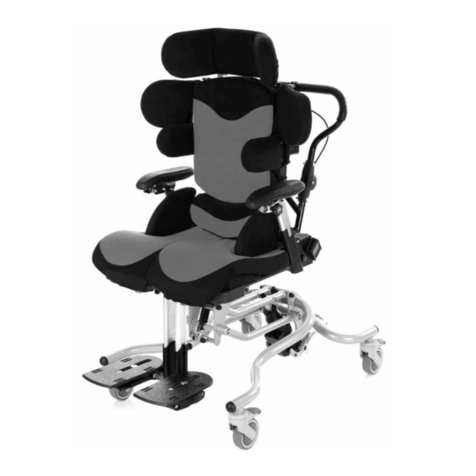
5
Z PP E XP RE SS
IV. NOTICE– READ BEFORE USE
A. CHOOSE THE R GHT DEV CE & SAFETY OPT ONS
Sunrise provides a choice of many wheelchair styles to meet the
needs of your child. However, final selection of the type of device,
options, and adjustments rests solely with you and your health
care advisor. Choosing the best early intervention device and set-
up for safety depends on such things as:
1. The child’s disability, strength, balance, coordination, and the
limits of their abilities.
2. The types of hazards that must be overcome in daily use
(where you live and work), and other places you are likely
to use the device.
3. The dependents need of options for their safety and comfort.
C. WARN NGS
The word “WARN NG” refers to a hazard or unsafe practice that
may cause severe injury or death to you or to other persons. The
“Warnings” are in three main sections, as follows:
1. V — GENERAL WARN NGS
Here you will find a safety checklist and a summary of risks
you need to be aware of before you ride this device.
2. V — WARN NGS — FALLS & T P-OVERS
Here you will learn how to avoid a fall or tip-over while
performing daily activities with the device.
3. V — WARN NGS — FOR SAFE USE
Here you will learn about practices for the safe use of the
device.
4. V — WARN NGS — COMPONENTS & OPT ONS
Here you will learn about the components of the device and
options you can select for safety. Consult your authorized
supplier and your health care advisor to help you choose the
best set-up and options for safe use.
NOTE - Where they apply, you will also find “Warnings” in other sections
of this manual. Heed all warnings. f you fail to do so, a fall, tip-
over or loss of control may occur and cause severe injury to the
rider and/or others.
V. GENERAL WARNINGS
NTENDED USE: The Zippie Xpress is intended for medical pur-
poses to provide mobility to persons under 55lbs(25kg) restricted
to a sitting position.
B. REV EW TH S MANUAL OFTEN
Before using this device you, and each person who may assist you,
should read this entire manual and make sure to follow all instruc-
tions. Review the warnings often, until they are second nature to
you.
A. WE GHT L M T
WARN NG
NEVER exceed the weight limit of 55 pounds (25 kg), for the
weight of the occupant. f the limit is exceeded, damage to your
device, a fall, tip-over or loss of control may occur and cause
severe injury to the rider and/or others. Never hang items greater
than 5lbs (2.3kg) from stroller handle or seat back handle. A fall,
tip-over, or loss of control may occur.
B. GETT NG TO KNOW YOUR DEV CE
WARN NG
Read all instructions before using this product. n particular, you
should be trained in the safe use of this product by your health
care professional.
C. TO REDUCE THE R SK OF AN ACC DENT
WARN NG
1. BEFORE using this device, you should be trained in ts safe
use by your health care professional.
2. Practice transfers until you know your limits and the extent
of your child’s abilities. Always ask if you need to have
someone help you to avoid a fall or tip-over.
3. Be aware that you must develop your own methods for safe
use best suited to your level of function and ability.
4. NEVER try a new maneuver on your own until you are sure
you can do it safely.
5. Get to know the areas where you plan to use your device,
look for hazards and learn how to avoid them.
D.SAFETY CHECKL ST
WARN NG
Before each use of the Early ntervention Device.
1. Parking brake must be adjusted to maintain proper perform-
ance. Always engage the parking brake before transferring a
dependent child.
2. Check that the device rolls easily, and that all parts work
smoothly. Check for noise, vibration, or a change in ease of
use, (they may indicate loose fasteners, or other damage).
3. Repair any problem you may encounter. Your authorized
supplier can help you find and correct any problems.
4. Make sure the tire/axle on both sides are fully engaged and
locked. f they are not locked, the wheel may come off and
cause a fall.
5. Never seat your child in the mobility device until it is fully
unfolded and locked.
6. After adjusting handle length check to make sure that it is
locked at the new length.
7. Always use a pelvic positioning belt when child is seated.
8. Never leave your child unattended.
E. CHANGES AND ADJUSTMENTS
WARN NG
1. If you modify or adjust this chair, it may increase the risk of
a tip-over UNLESS you make other adjustments as well.
2. Consult your authorized supplier BEFORE you modify or
adjust your chair.
3. We recommend that you use anti-tip tubes until you adapt
to the change, and are sure you are not at risk to tip over.
4. Unauthorized modifications by the end-user, dealer or any
other individual, including the use of parts not supplied or
approved by Sunrise may change the chair structure. This
will void the warranty and may cause a safety hazard.
